Dinosaur!
New Member
- Messages
- 908
- Location
- Las vegas, Nevada
Hello everyone! I was talking to someone on a different thread, and the conversation there inspired me to make this thread in order to show the stages of life, and how (I personally) take care of each stage (minus eggs: too tiny to see!) so here it is!
1.Larvae
This is a bowl with different sizes of mealworms (larvae)

The biggest one in that bowl is an adult size giant mealworm larvae. It is about the size of the giant mealworms that you can buy at the pet store. I house all of my mealworm larvae in a 15 qt. Tupperware container with plenty of air holes drilled in for ventilation. I keep them on a whole oats, cheerios (plain, not honey nut), and chicken feed bedding. I grind the oats and cheerios into a powder, or fine particles. Then I add the chicken feed till I feel it's a good ratio between ingredient's. I keep the bottom of the bin lined with about three or four inches of the bedding, and put slices of carrots and occasionally apples on top of the bedding to feed the worms. I keep them at about 75-80 degrees by placing them in a warm spot in my room. I clean the bin every few weeks, and spot clean dead mealworms and pupae every day or so.
2. Pupae (cocoons)
This is a freshly molted mealworm pupae.
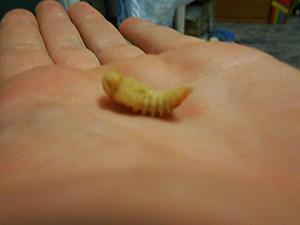
When mealworms become old, and large enough, they molt into an alien-like pupae. You will usually find these on top of the bedding in the bin. You then want to move these pupae to another bin (I use 6 qt. bins, or large deli cups for this). They are only able to wiggle at this stage, which they will do often when touched or disturbed. they do not require any food or special care at this stage, and are better to be just left alone. Two weeks or so later, the pupae will turn a rather dark brown or red, start rhythmically twitching, and its legs will begin to move. this means that it is about to molt into a beetle!

This one is going to be a beetle within the hour!
3. Mealworm beetles (Darkling or flour beetles)
After your pupae molts for the last time in its life, you will be left with a brand new beetle that looks like this.
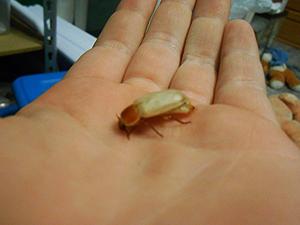
The above beetle is less then 10 minutes old. It is very soft and white. when they are that soft, it is the only time it's recommended to feed them to your geckos because, as the below photo shows, their wings harden into a dark hard shell that may pose digestion problems for your gecko.

Also, I have noticed that if you mess with the hardened beetles, they release a strong, repulsive scent. I have marked these beetles as male and female, because males are notably smaller then the females (plus I just caught these two "doing the deed"), so you can usually determine their gender by sight when they are adults. The care for these guys is pretty much identical to the larvae stage. Beetles will typically live for about three weeks, in which time they will lay plenty of microscopic eggs without any assistance. These babies will take months to grow to a suitable feeder size, but the small ones are perfect for hatchlings!
4. Newborn mealworm larvae
This is a three week old or so mealworm, as compared to my thumbnail.

When baby mealworms begin to be visible in your beetle bin, you need to remove all the beetles, dump the beetles bedding into the mealworm bin, replace the beetles bedding, and put the beetles back in. This is a necessary step, as adult beetles are cannibals, and will eat the larvae if given the chance.
5: Supplementing/dusting
It is extremely important that you are supplementing your leopard geckos diet with calcium and vitamins in order to prevent your gecko from contracting MBD (metabolic bone disease, or having vitamin deficiency. I'll tell you what method works for me, but there are other successful methods out there that you may choose to use instead.
First off, you need calcium WITH vitamin D3. D3 is an essential vitamin for leopard geckos, and without it, they cannot absorb the calcium they intake, making it pointless, and causing MBD. You should sprinkle this on top of the mealworms after you put them in our geckos food bowl, as the "shake and bake" method will suffocate and kill the worms. This is the calcium with D3 that I use.
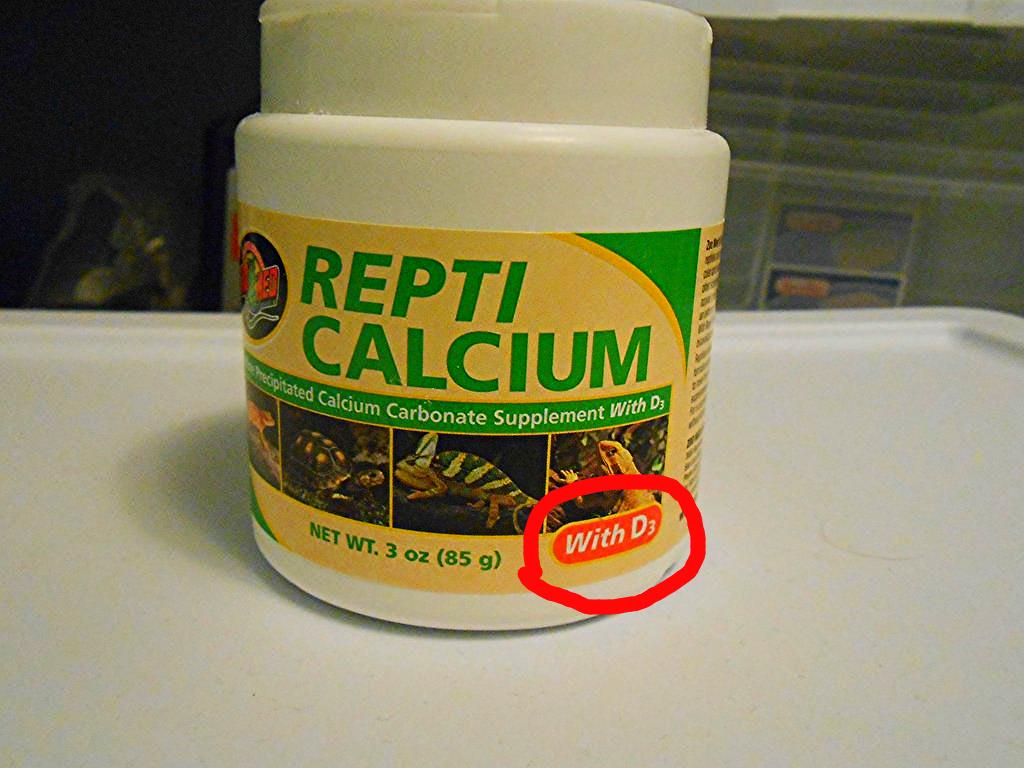
you should only dust with D3 every other feeding, as high amounts can cause illness.
Second, you need to have a multivitamin with vitamin A in it. Your gecko needs this to help prevent shedding, eye, and organ issues. Dust the same way as with the calcium, but only ONCE a week. to much can be harmful. This is my vitamin supplement.
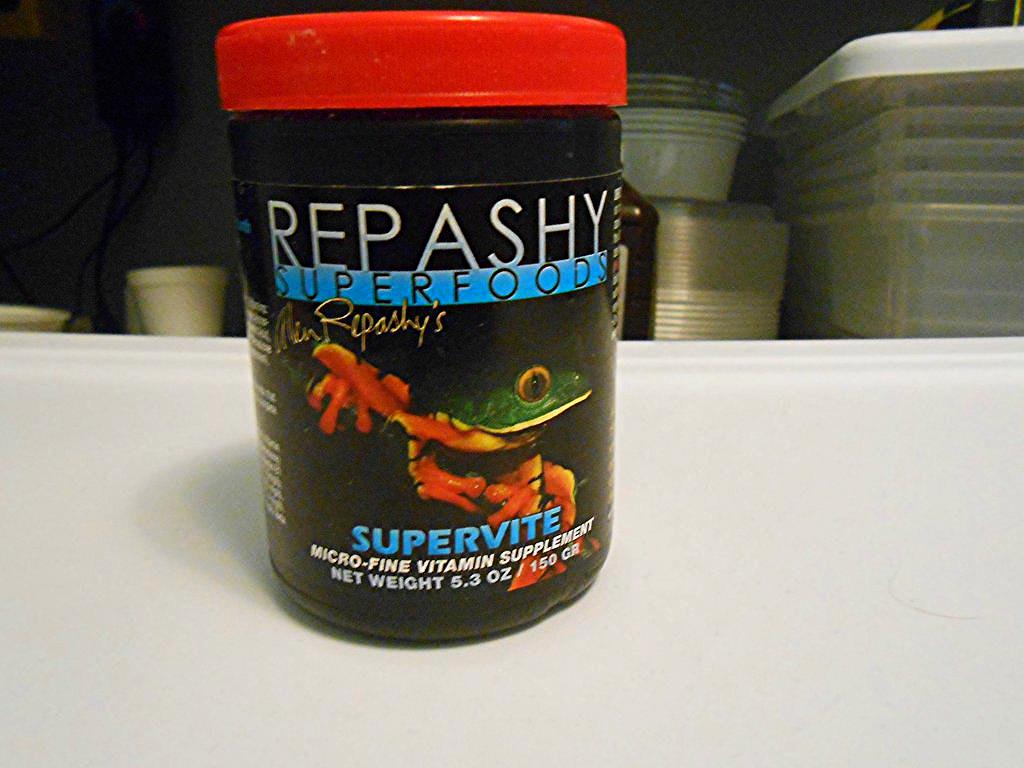
And lastly, you will need to keep a small bowl of D3 free calcium inside of your geckos tank. This way, your gecko can lick up the calcium when it feels that it needs it, without the risk of overdosing on D3.
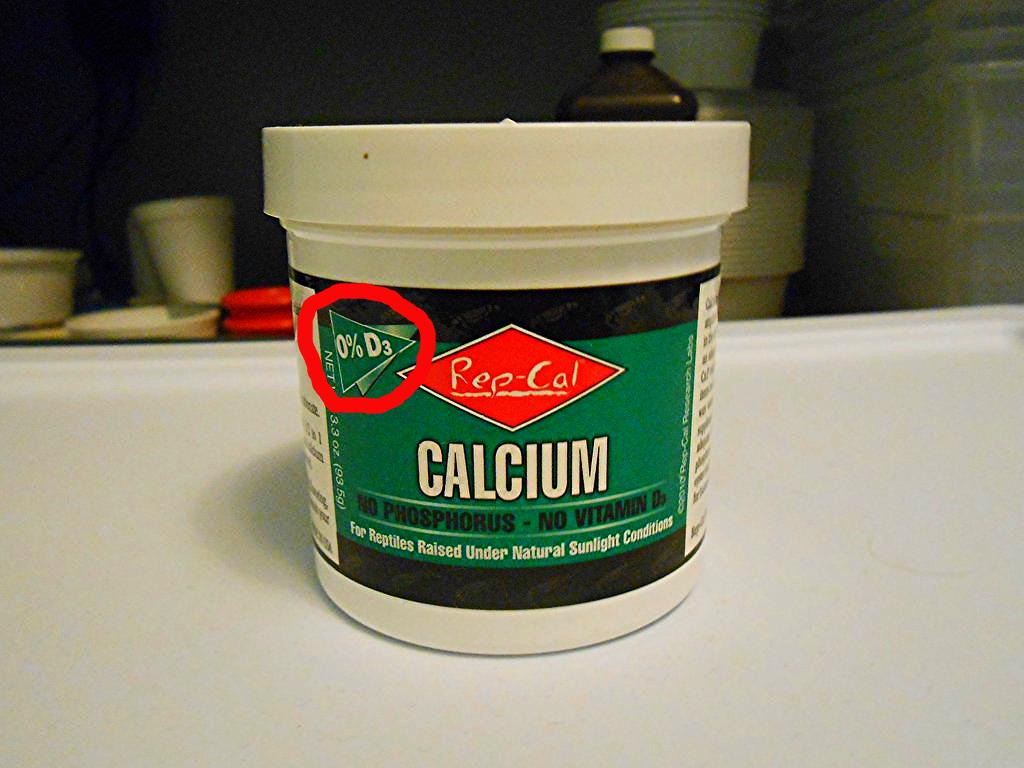

6: Other notes on this subject-
- Occasionally you might miss a pupae or two, and they could turn into beetles inside of your larvae bin. Simply place these beetles into your beetle bin, and your ready to go! (Thank you Tongue Flicker!)
- Contrary to some peoples belief, mealworms will NOT burrow out of your geckos stomach and kill them! This is purely myth, and in 5 or more years of raising geckos, I have never seen a mealworm hurt any my geckos, leopard or otherwise.
- Any other ideas/ questions I need to answer, that I can add to the side notes? Thank you everyone for reading and helping out! And remember , kids, eat your mealworms every day, and you'll be as big as Pork-chop one day!

--------------------------------------------------------------------
Well anyway, this is my little article thing, and a guide to how I successfully keep a mealworm colony. If you have any questions, or I left anything out, just let me know! I hope this helps you guys out!
1.Larvae
This is a bowl with different sizes of mealworms (larvae)

The biggest one in that bowl is an adult size giant mealworm larvae. It is about the size of the giant mealworms that you can buy at the pet store. I house all of my mealworm larvae in a 15 qt. Tupperware container with plenty of air holes drilled in for ventilation. I keep them on a whole oats, cheerios (plain, not honey nut), and chicken feed bedding. I grind the oats and cheerios into a powder, or fine particles. Then I add the chicken feed till I feel it's a good ratio between ingredient's. I keep the bottom of the bin lined with about three or four inches of the bedding, and put slices of carrots and occasionally apples on top of the bedding to feed the worms. I keep them at about 75-80 degrees by placing them in a warm spot in my room. I clean the bin every few weeks, and spot clean dead mealworms and pupae every day or so.
2. Pupae (cocoons)
This is a freshly molted mealworm pupae.

When mealworms become old, and large enough, they molt into an alien-like pupae. You will usually find these on top of the bedding in the bin. You then want to move these pupae to another bin (I use 6 qt. bins, or large deli cups for this). They are only able to wiggle at this stage, which they will do often when touched or disturbed. they do not require any food or special care at this stage, and are better to be just left alone. Two weeks or so later, the pupae will turn a rather dark brown or red, start rhythmically twitching, and its legs will begin to move. this means that it is about to molt into a beetle!

This one is going to be a beetle within the hour!
3. Mealworm beetles (Darkling or flour beetles)
After your pupae molts for the last time in its life, you will be left with a brand new beetle that looks like this.

The above beetle is less then 10 minutes old. It is very soft and white. when they are that soft, it is the only time it's recommended to feed them to your geckos because, as the below photo shows, their wings harden into a dark hard shell that may pose digestion problems for your gecko.

Also, I have noticed that if you mess with the hardened beetles, they release a strong, repulsive scent. I have marked these beetles as male and female, because males are notably smaller then the females (plus I just caught these two "doing the deed"), so you can usually determine their gender by sight when they are adults. The care for these guys is pretty much identical to the larvae stage. Beetles will typically live for about three weeks, in which time they will lay plenty of microscopic eggs without any assistance. These babies will take months to grow to a suitable feeder size, but the small ones are perfect for hatchlings!
4. Newborn mealworm larvae
This is a three week old or so mealworm, as compared to my thumbnail.

When baby mealworms begin to be visible in your beetle bin, you need to remove all the beetles, dump the beetles bedding into the mealworm bin, replace the beetles bedding, and put the beetles back in. This is a necessary step, as adult beetles are cannibals, and will eat the larvae if given the chance.
5: Supplementing/dusting
It is extremely important that you are supplementing your leopard geckos diet with calcium and vitamins in order to prevent your gecko from contracting MBD (metabolic bone disease, or having vitamin deficiency. I'll tell you what method works for me, but there are other successful methods out there that you may choose to use instead.
First off, you need calcium WITH vitamin D3. D3 is an essential vitamin for leopard geckos, and without it, they cannot absorb the calcium they intake, making it pointless, and causing MBD. You should sprinkle this on top of the mealworms after you put them in our geckos food bowl, as the "shake and bake" method will suffocate and kill the worms. This is the calcium with D3 that I use.

you should only dust with D3 every other feeding, as high amounts can cause illness.
Second, you need to have a multivitamin with vitamin A in it. Your gecko needs this to help prevent shedding, eye, and organ issues. Dust the same way as with the calcium, but only ONCE a week. to much can be harmful. This is my vitamin supplement.

And lastly, you will need to keep a small bowl of D3 free calcium inside of your geckos tank. This way, your gecko can lick up the calcium when it feels that it needs it, without the risk of overdosing on D3.


6: Other notes on this subject-
- Occasionally you might miss a pupae or two, and they could turn into beetles inside of your larvae bin. Simply place these beetles into your beetle bin, and your ready to go! (Thank you Tongue Flicker!)
- Contrary to some peoples belief, mealworms will NOT burrow out of your geckos stomach and kill them! This is purely myth, and in 5 or more years of raising geckos, I have never seen a mealworm hurt any my geckos, leopard or otherwise.
- Any other ideas/ questions I need to answer, that I can add to the side notes? Thank you everyone for reading and helping out! And remember , kids, eat your mealworms every day, and you'll be as big as Pork-chop one day!

--------------------------------------------------------------------
Well anyway, this is my little article thing, and a guide to how I successfully keep a mealworm colony. If you have any questions, or I left anything out, just let me know! I hope this helps you guys out!
Last edited:



